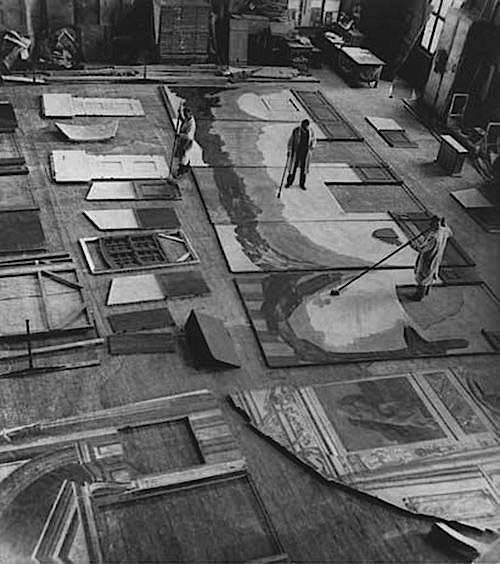The Cabinet of Dr Caligari
Structural Elements & Colour
Natalie Delic

Film & Director Background
Filmed in 1920, silent film
Genre: Horror/mystery
- this film gave birth to the horror genre
Duration: 1 hour, 20 minutes
Directed by Robert Wiene
ABOUT:
A story about a hypnotist (Dr Caligari) who uses a somnambulist (Cesare) - "the act of completing motor actions while sleeping" to commit murders.
Themes:
horror, madness/insanity, identity
Robert Wiene:
A German film director during the silent era of German cinema. He directed multiple, successful films which he began in 1912. Before getting involved, he had started acting in 1908. Wiene was well-known for his film 'The Cabinet of Dr Caligari' due to his unique lighting techniques which inspired the horror genre. Further on, he used visual elements which defined the title character's madness and with the use of tilted cameras to present skewed images and a dark atmosphere. He was also famously known for using expressonist architecture where he hired three expressionist artists; Hermann Warm, Walter Rohrig and Walter Reimann to design sets that depicted deformed spatial relationships and exaggerated dimensions.
Colour Palette:






Behind the selected scene (54:01), the Robert Wiene used thick posters which were painted on by people to add further detail in the scenes throughout the film which adds further colour and patterns which depict of expressionist architecture.

3D Model of Perspective

Analysis
Throughout the film 'The cabinet of Dr Caligari,' Robert Wiene focused on representing expressionist architecture throughout the scenes. Specifically, in the selected scene (54:01) where Alan finds out the murderer was captured, he is positioned at the centre of a spiral on the ground, looking at the man running up the stairs. In this scene, Neo-gothic structural elements are visible to an architect's eye through the symmetrical arches and windows. As this scene is near the end of the film, it is iconic due to the architecture involved that contrasts with the rest of the film. In saying this, the lighting and colours used are usually darker throughout the film whereas this scene highlights lighting and colour significantly due to the use of yellow tones which impact the mood which is set in the scene. Moreover, the use of including brighter colours allow structural elements to dominate the space as it allows architect's to critically analyse architectural elements and patterns such as the symmetric pattern of curved archways and windows. Majority of the scenes in the film consist of dark subjective elements which allow the audience to view the scene as a dramatic space. This is done by the lack of bright colours used and shadows to reinforce the theme of madness. However, the subjective elements incorporated by Wiene in the chosen scene such as lighter choices of colours, highlight architectural elements as well as ornamentation adapted from the neo-gothic style. Further on, this scene (54:01) is iconic throughout the film as it only demonstrates straight lines in doorways and buildings which are visible. The symmetry and order contrasts with the style in which the rest of the town is depicted, which clearly shows the difference between the hallucinations of the protagonist and the reality of the world. Due to the expressionist film, the architecture expresses the thoughts and emotions of Francis.
